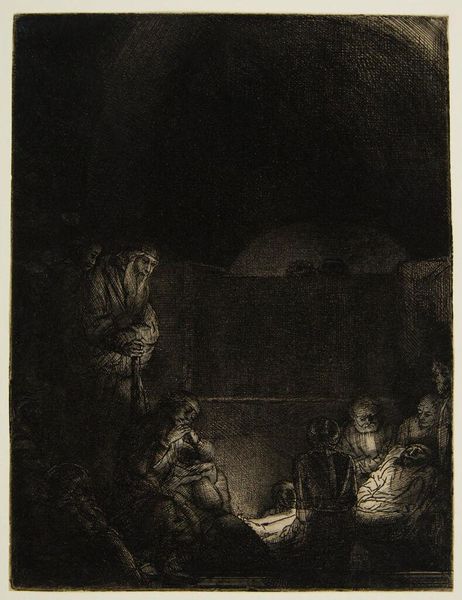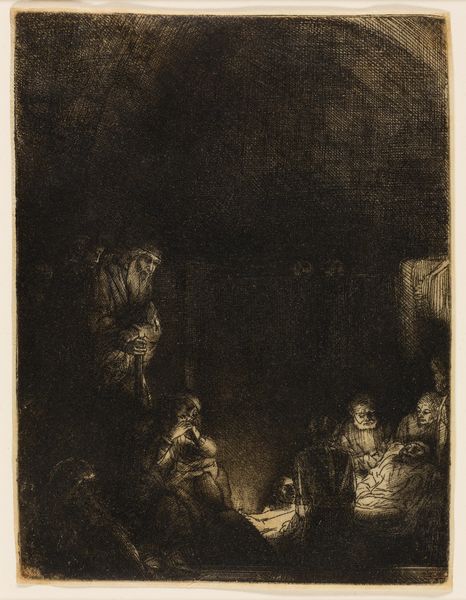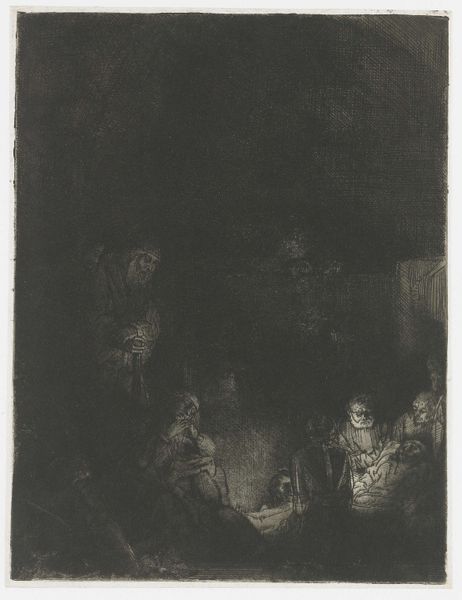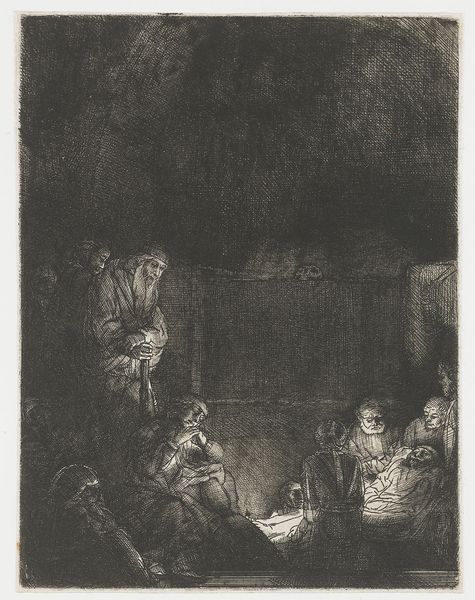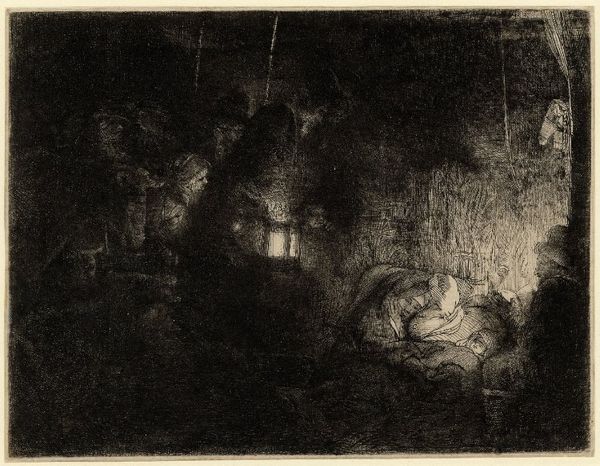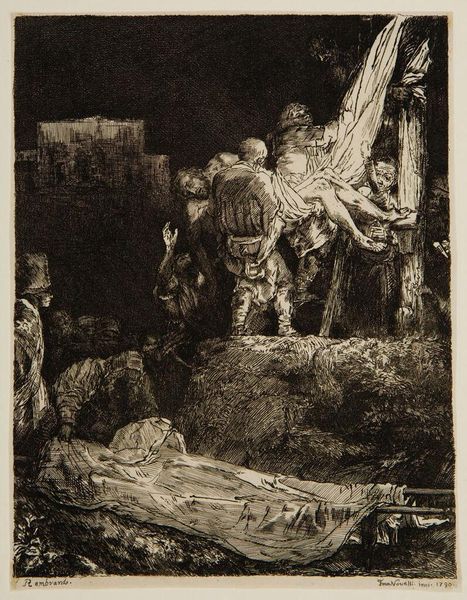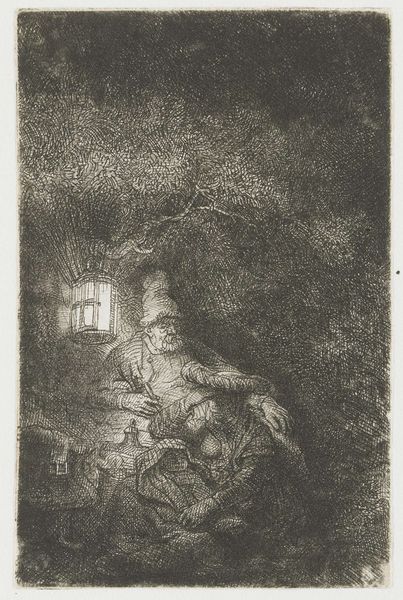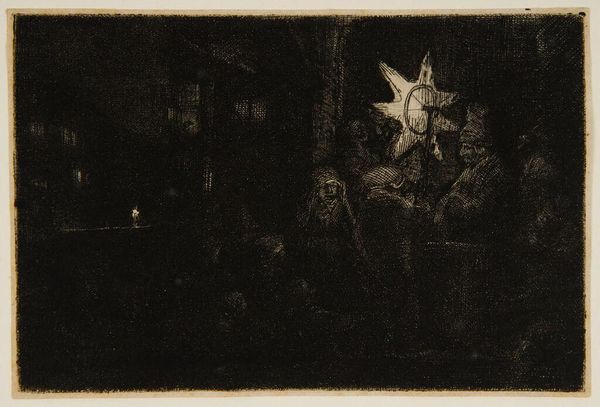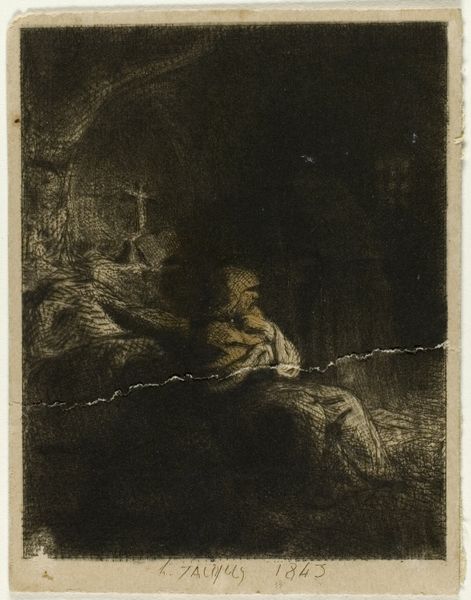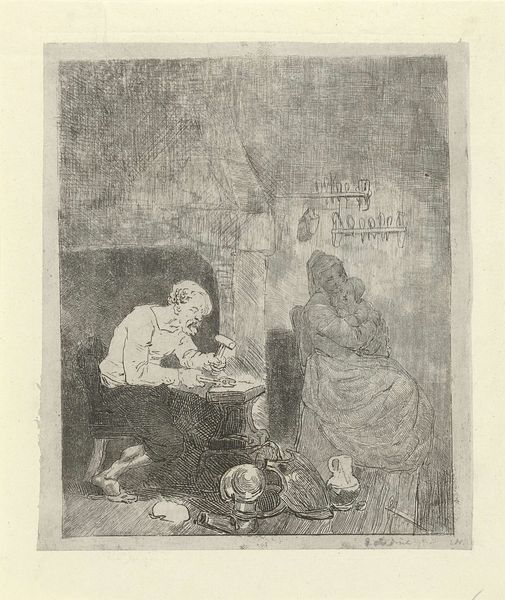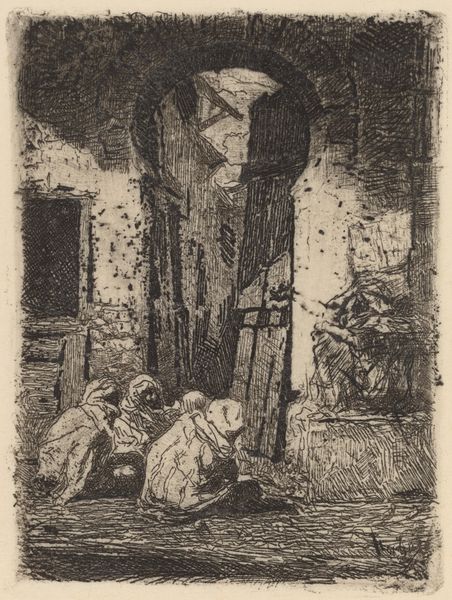
drawing, print, etching
#
drawing
#
narrative-art
#
baroque
# print
#
etching
#
charcoal drawing
#
figuration
#
history-painting
#
charcoal
#
monochrome
Copyright: Public Domain: Artvee
Curator: We're looking at Rembrandt van Rijn's etching, "The Entombment," created in 1654. Editor: It’s strikingly somber, cloaked almost entirely in shadow. The scene emerges from the darkness through stark contrasts of light and shade. Curator: The use of chiaroscuro is characteristic of Rembrandt, absolutely. Note how the composition leads the eye. The mourners create a circular arrangement that cradles Christ’s body in the center. This intimate scene stands in contrast with the vast darkness. Editor: What strikes me is not just the dramatic lighting, but its societal implications. In the 17th century, images like this held significant religious and political power. Consider the role the church played, and how such depictions would reinforce doctrines about life, death, and salvation. It's worth contemplating who this print was made for, and how its distribution could impact public perception of faith and morality. Curator: Precisely. The work is heavily reliant on line. Look closely at the figures; they're defined less by shape and more by the sheer density of etched lines creating variations in tone. There’s a sense of emotional immediacy through this almost frantic mark-making. Note how the eye travels from the density of lines on the face to the flowing, ethereal quality of Christ's burial shroud. Editor: The expressions captured here are so vital for its cultural impact. Rembrandt was working during a time when patronage influenced artistic creation deeply. What political statements, if any, could be embedded within such a narrative, given the tensions between the church and various segments of Dutch society at the time? The reception would be colored by that socio-political context, no? Curator: The power of the image stems from formal techniques such as the expressive lines creating tone. Regardless of patron expectations or immediate public context, the emotional impact remains because of how Rembrandt structured this composition. The tonal structure builds layers of symbolic representation that communicate death and mourning, visually. Editor: The questions this etching prompts regarding the convergence of art, faith, and society during its period offer profound historical insights into the cultural landscape of 17th-century Netherlands. Curator: It is indeed a powerful piece, achieving visual eloquence and affecting us deeply with shadow, light, and carefully placed line.
Comments
No comments
Be the first to comment and join the conversation on the ultimate creative platform.
